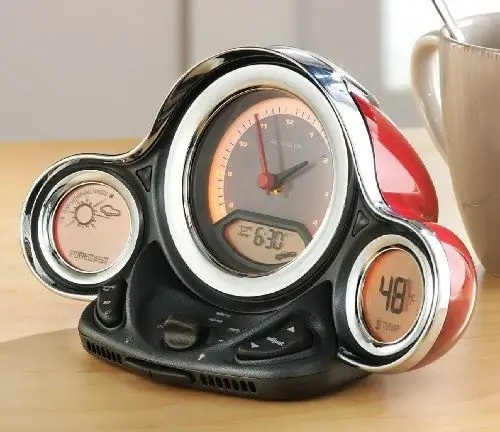- Author Maria Gibbs [email protected].
- Public 2023-12-16 03:05.
- Last modified 2025-01-22 17:47.
The wear of engines located in motor vehicles is determined by the mileage of the vehicle. To assess the service life of stationary engines, motor hours are used.

Instructions
Step 1
The measurement of the service life in operating hours is carried out for stationary installed engines, such as pump drives, diesel generators, marine motors, as well as on agricultural machinery. This information is necessary for timely maintenance, repair, replacement of components and assemblies, as well as write-off of fuel and lubricants. The means of change can be different - from a simple recording of the hours worked by the engine in the logbook or ship's log, to complex electronic means of collecting and analyzing statistical information. It should be noted that depending on the metering method, the engine hour may or may not be equal to the standard hour. The problem arises of converting engine hours to standard astronomical hours - for example, to plan the date of the next oil change.
Step 2
The easiest way is to implement accounting of engine hours for engines operating in a stationary mode - i.e. without changing the speed of rotation of the crankshaft. This mode of operation is typical for small power plants using diesel generators to generate electricity. To ensure a stable frequency of the generated electric current, the generator shaft must rotate at the same speed, with minimal deviations. With such loads, you can use the simplest system for calculating the motor resource - manually record the time actually worked by the engine in the log, or use some kind of electrical or barometric sensor that starts the clockwork while the engine is running. With such a metering system, the engine hour is equal to the usual astronomical hour, which means that no recalculation is required.
Step 3
It is much more difficult to account for engine wear at variable engine speeds. This situation is typical for ship power plants. At high speeds, fuel consumption increases, and friction in the rubbing pairs of the engine also increases. To calculate engine hours, taking into account these unstable factors, tachometric accounting systems are used. A special mechanism is installed on the output shaft of the motor to fix the number of engine revolutions. Based on the readings of this counter, routine maintenance is planned, fuel is written off. With such a fixing system, it will not be possible to accurately translate engine hours into hours, since, depending on the engine operating mode, a different number of engine hours accumulates per unit of time. Knowing the average engine speed, an empirical conversion factor can be derived from the statistical data.






